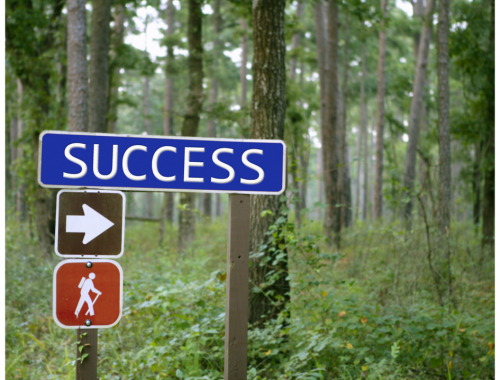This week I received yet another completely generic, one-line “I’d like to connect with you on LinkedIn” invitation from someone I didn’t know, whose job title is “student at XYZ University.” I admit, I am sometimes uncertain about the invites I get. Not because I am old and forgetful, but because I’ve been working since I was 16—I’ve met a lot of people in my life, from many different circles, and sometimes it’s hard to place them out of context. (And I started my career long before LI was invented, so there are people who suddenly join who knew me quite well years ago.) Giving everyone the benefit of the doubt, when I’m not sure I go check out the profiles of the unknown message senders on LinkedIn. This week’s uninitiated user profile has no photo, and relatively little info, given they are young and with little experience. They aren’t in a field that relates to what I do nor is their school one I have any strong personal connection to (there are two business school scholarships there in my dad’s name, but my last name is different, so I’m dismissing that as the reason.) I’m not accepting the invite and I’ll nicely mark the invite reason as “I don’t know Person X” (the other option is to mark it as spam). If you get too many declines for this reason LinkedIn can restrict or even terminate your account. This is not a happy outcome for this student (who by the way sealed their amateur status by having only 20 connections).
First of all, have a real profile, including a photo, when you are connecting with anyone. Start off by connecting to your classmates, professors, parents, friends’ parents. Try getting to 50 connections. Send invites after you’ve had a successful meeting or email exchange with someone new. If you’ve had only a brief conversation at a large gathering, follow up with an email or coffee invite, not a LI invite. Once you’ve actually met, then follow up with an invite. Give yourself time to get back to your office or the equivalent—at least an hour. Invites sent on your phone from the car five minutes after the meeting are a exclusive hallmark of overly enthusiastic teenagers. Cute, possibly accepted, but not as a peer. Try and find one sentence to add to the template “I’d like to connect” message. Personalize the invitation and perhaps remind the person where you met. While you may have had only one great informational interview that day, they may have had ten meetings. Contextualize your requested connection.
If you MUST contact a total stranger, be sure to send a longer note. LinkedIn keeps it very brief, but there is time to get 1-2 sentences in there, saying something like:
“Mrs. Lyon, I hope you remember me from your time working with the Torrey Pines High School debate team. I’d like to connect with you on LinkedIn.” (No one calls me Mrs. Lyon, but at least seeing that tips me off that you knew me as parent. Some people might be more hung up on formalities, so gauge your audience as best you can. Doctors, in my experience, are always a little freaked out when you call them by their first names, as are some professors. Probably no one else in California ever uses titles.)
“Susan, I stumbled upon your blog from a link another University of Puget Sound student sent me and while I graduated before your son began attending Puget Sound, I’d like to connect with you on LinkedIn.”
“Susan, I was an intern with so-and-so who worked with you on a film for Qualcomm last summer, and you mentioned you loved to do informational interviews with students. I’d like to connect with you on LinkedIn.”
“Mrs. Lyon, my parents know you from your work together at XYZ and they suggested I try and meet with you for some simple career advice on the advertising industry while I am in town in December. I’d like to connect with you on LinkedIn.”
All of these give me a clue as to who you are and why I might say yes to the invite, although I don’t actually know you. This means there’s a chance I’ll say yes and not be forced to contribute to your blacklisting on LinkedIn. Strike while the iron is hot. If you meet a recruiter, if only for an one-on-one informational session, send an invite that same day. The next day they are recruiting at another school and it’s likely hard for them to remember everyone they meet with individually. Definitely add the single sentence to give them a clue who you are, whether it drives home a salient point about your qualifications or just helps them remember the conversation. (Worst case, they are going to go look at that profile photo—it’s an actual tool, make sure it’s working for you.)
“I was excited to find Teach for America had so much need for biology majors.”
“It was great to meet another Seahawks fan!”
“I loved talking about my childhood haunt, the San Diego Zoo, with you.”
If they accept, give it a rest until something else pertinent comes along. If your opening bid was as in my first set of examples above and you reached out to a stranger, go ahead and follow up if they don’t. Recognize that they are busy people, so a delay of a day or two on your part may not be a bad thing. You want to appear effective, not high-maintenance. (I’m sorry, did you think dating was hard?) If you’re too hard-core about pouncing on locking that December date for coffee, you may worry me a bit. No games-playing here, just don’t scare anyone off.
Never, ever send invites out using the horrible People You May Know grid unless you are 100% sure they know you. Clicking on those immediately sends out the generic message. That’s just their secret algorithm making suggestions and it’s not all that great in my experience. (It does show you how lame profiles with no photo look.) My rule of thumb is that I only click on those links when I am surprised to see someone there because I assume we would already be connected.
If you’ve already landed the job, internship of your dreams, and have all these connections from that interviewing process, be sure to methodically go through and follow up with short notes letting people know you landed a great opportunity and you really appreciated their advice, insights, experience (info interviews) or hearing about their organization, openings, program (job/intern/grad school interviews). The professional world is small and your career is long, so nurturing your networks when you need nothing at all is key to having a viable one when you do need something down the road.





No Comments